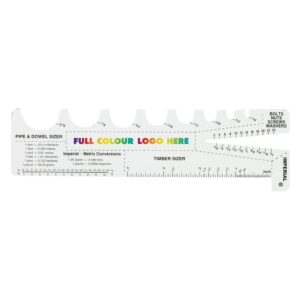In any pipeline system, understanding how fluid behaves is critical to its performance. One of the most common challenges engineers face is estimating how much pressure is lost as fluid moves through a pipe. This is where the Pipe Friction Loss Calculator proves invaluable.
At first glance, it might look like a simple plastic slider, but it’s a powerful tool that takes the guesswork out of hydraulic design. It’s used by engineers and technicians to determine the rate of pressure loss caused by internal resistance as fluid travels through a pipe. Unlike spreadsheets or apps, it doesn’t rely on batteries or an internet connection and works reliably whether you’re at your desk or out on site.

What a friction loss calculator actually tells you
The friction loss calculator helps you estimate pressure drop per 100 metres of pipe, based on three interconnected factors: flow rate, pipe size, and velocity. These variables are central to fluid system planning. Friction loss represents the energy lost due to turbulence and internal resistance, and understanding this loss helps with pump sizing, pipe selection, and maintaining system efficiency.
Setting the flow rate on the calculator
To use the tool, begin by identifying the flow rate your system requires. Most engineers will be working in litres per second or cubic metres per hour, both of which are available on the calculator’s sliding insert. Align the chosen flow rate with the fixed marker on the outer sleeve. This will set the basis for all other readings.
Reading velocity against pipe size
Once the flow is aligned, the next step is to locate the pipe size you’re using. The friction loss calculator is marked with a wide range of standard nominal diameters, from 32mm up to 300mm. Directly next to each pipe size, you’ll see a velocity reading in metres per second. This value shows how quickly the fluid will travel through that diameter of pipe, based on your selected flow.
Velocity plays an important role in system design. Too much speed can lead to noise, excessive wear, or energy loss. Too little, and your system may suffer from uneven flow or inadequate delivery pressure.
Using the friction loss calculator to determine pressure drop
Below the velocity line is where you’ll find the friction loss figures, expressed in metres per 100 metres of pipe. This value shows you how much energy is being lost just to overcome internal pipe friction. It’s especially useful when estimating overall pressure requirements across long pipe runs.
If your system involves a different pipe length, the number can be scaled proportionally. For example, a 250-metre pipe run would require the loss figure to be multiplied by 2.5. There’s also a guide printed on the calculator to help you adjust for solids in suspension, should your fluid contain particulate matter.
Why choose a manual friction loss calculator over software
While digital tools are widely used in design offices, a manual calculator offers immediate, on-the-spot answers. It doesn’t require charging, has no risk of data loss, and works under any conditions. For field engineers, surveyors, and contractors, it provides dependable results when you don’t have time to fire up software or check your laptop.
There’s also the tactile advantage. With a friction loss calculator, you’re physically engaging with the data, which often leads to better understanding and faster decision-making. It’s a hands-on tool that helps clarify the relationship between flow, velocity, and pipe diameter – something that isn’t always intuitive in spreadsheet format.
Branded friction loss calculators as practical promotional tools
In addition to its technical benefits, the calculator doubles as a memorable and genuinely useful branded giveaway. With a full-colour print area on the front, companies in engineering, utilities, or water treatment often customise them with logos and use them at trade shows, client meetings, and training events.
Unlike novelty items that often get discarded, a friction loss calculator tends to stay in use. It’s a reminder of your brand every time someone checks system performance, assesses a pipeline, or plans a new install.
An essential tool for engineers in the field
The friction loss calculator is more than a convenient reference. It’s a decision-support tool that helps engineers work more efficiently, reduce guesswork, and ensure safe, consistent fluid transport. Whether you’re working on municipal water systems, irrigation setups, industrial pipework, or specialist fluid systems, this tool brings clarity to complex questions – no batteries required.
NOTE: Our guides are intended as just that, a guide. Please seek professional instruction before attempting to use these tools yourself.

